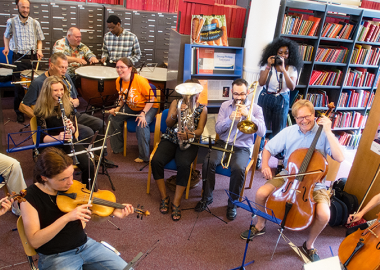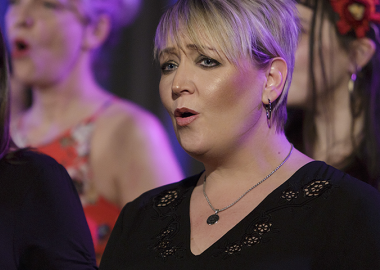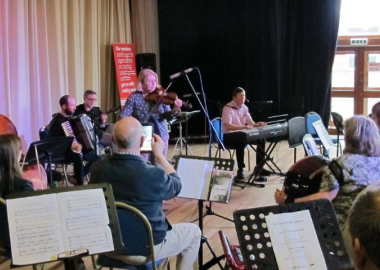After looking at pipe and tabor, signing choirs, samba, handbell ringing, barbershop and wind bands, the latest in our 'An introduction to...' series looks at folk music, its origins and history as the peoples music.
What is folk music?
Folk is a term used to describe all sorts of musical, oral and cultural traditions from specific regions and societies around the world. Folk comes from the German word ‘volk’ meaning ‘the people’ and folk music is often thought of as being the music belonging to ‘the people’. It has been historically used as a reflective term to distinguish certain types of music from those associated with institutions such as royal courts, the church, or Western classical music.
Where does folk music originate?
It is impossible to say exactly where much of folk music originally came from since it is often defined as existing outside of documentation and the historical record, and is often used to describe certain types of music from regions around the world.
In the UK folk music came from ordinary people within a region or nation, where songs would have been passed down orally and music would have been learned by ear.
However, in the late 19th century there was a movement in collection and documentation of folk music, which developed throughout the 20th century into a culture of ‘folk’ as a distinct musical genre. It is now common to associate folk music not only with particular regions but also with specific composers and musicians, sheet music and tablature being freely available on the internet. The flexible and democratic nature of folk music as owned by the people though, as well as shared and created through each individual personal experience, has given it a political dimension that persists today. This political aspect has been responsible for influencing a number of folk music revivals across the entire political spectrum - from the right wing nationalistic composers of the late 19th century to the left wing cultural revolutionaries of the 1960s and ‘70s.
What are folk songs about?
Folk songs are usually sung at social occasions and locations where there is an element of sharing ideas or sentiment.
The subject matter ranges from commemorative (the death of Nelson), to rural (cropping hay), and after the industrial revolution also became more urban in topic with a political edge. Common types of song include ballads, lyric songs and sea shanties all of which lend themselves to the narrative storytelling aspect of folk culture. Song structure is often based around a repetitive chorus punctuated with changing verses; the chorus is designed so that multiple people might join in, and in the case of workers songs, aids them to get through the repetitive, mechanical aspects of the job.
Which instruments are involved in a folk group?
Typical instrumentation for the folk music traditions of the British Isles commonly involves: voice, violin (known as the fiddle in the folk setting), acoustic guitar, flute, whistle, pipes, accordion, melodeon, mandolin, harmonica, and tenor banjo. However there are many less common ones as well - from percussion instruments like the spoons, the bodhrán and bones to more unusual instruments like the hurdy gurdy, hammer dulcimer and bazouki.
How do I get involved?
Folk is often played in groups, though not necessarily as a band. It is common practice to join a ‘session’ in a friendly public environment such as a pub or community centre.
Find a session near you
English Folk Dance & Song Society (EFDSS)
TMSA - Traditional Music & Song Association (Scotland)
trac - Welsh folk events listing
TradConnect - Traditional sessions in Ireland
We hope you find this Making Music resource useful. If you have any comments or suggestions about the guidance please contact us. Whilst every effort is made to ensure that the content of this guidance is accurate and up to date, Making Music do not warrant, nor accept any liability or responsibility for the completeness or accuracy of the content, or for any loss which may arise from reliance on the information contained in it.










